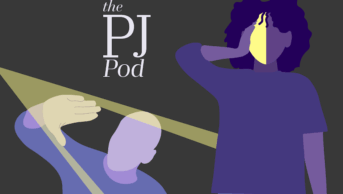
Shutterstock.com
After reading this article, you should be able to:
- Understand the pharmacological and non-pharmacological interventions used to control attention deficit hyperactivity disorder (ADHD) symptoms;
- Learn how pharmacists can support individuals with ADHD;
- Understand how age affects ADHD symptoms.
Introduction
The aims and objectives of the management of attention deficit hyperactivity disorder (ADHD) are to minimise the impact of the core symptoms (inattention, hyperactivity and/or impulsivity) on an individual’s daily functioning. Interventions are designed to provide support and symptom control that reduce the level of functional impairment, allowing individuals to achieve their potential and contribute towards a better quality of life. This article is the second in a two-part series and focuses on the management of ADHD. Information relating to characteristics and diagnosis of the condition can be found in ‘Attention deficit and hyperactive disorder: characteristics and diagnosis’. This article will provide an overview of the pharmacological and non-pharmacological interventions available and how ongoing support can be provided for people with ADHD.
Management
The management of ADHD requires a multi-modal approach to address an individual’s psychological, behavioural, occupational and educational needs, and consists of pharmacological and non-pharmacological interventions[1]. Table 1 summarises the treatment recommendations as per National Institute for Health and Care Excellence (NICE) guidelines[1,2].
Pharmacological management
Pharmacological treatment should be used as part of a comprehensive treatment plan that includes psychosocial interventions[3]. Medications are useful in controlling the core symptoms of ADHD and have shown to improve outcomes across multiple domains (e.g. family relationships, behaviour at school, academic productivity)[4]. Medicines licensed for the management of ADHD in the UK may be classified into stimulant (methylphenidate, lisdexamfetamine and dexamfetamine) and non-stimulant medication (atomoxetine and guanfacine)[1].
Pharmacological treatment should only be initiated by a specialist with expertise in ADHD, after a comprehensive assessment of mental and physical health and social circumstances[2,3]. A physical health review should include measurement of height, weight, blood pressure and pulse, and a cardiovascular assessment. An electrocardiogram is not routinely required before starting medications unless there are concerns such as:
- A personal or family history of symptoms indicating cardiac disease, including sudden death;
- Previous cardiac surgery;
- Any abnormalities/concerns detected during the cardiovascular assessment[2,3].
The outcome of this assessment will help determine pharmacological treatment options (see Table 2). Factors influencing choice of medication or a particular preparation include:
- Comorbidities (mental or physical) that may be contra-indicated/cautioned;
- Current medications;
- Individual compliance needs;
- Potential for drug misuse or diversion;
- Required duration of action of medication/dosing flexibility;
- Patient/carer preferences[2,5].
Prescribers should, therefore, have good knowledge of ADHD medications and their different preparations, including their pharmacokinetic profiles, to effectively tailor treatment to an individual’s needs[2].
Medication should be titrated in line with dosing recommendations to achieve the optimum dose (i.e. reduced symptoms, positive behaviour change, improvement in functioning with tolerable adverse effects). ADHD symptoms, impairments and adverse effects should be recorded at baseline and progress reviewed regularly (see Table 3)[2].
All initiations of medications, switches and stabilisation should be undertaken by specialist services. Once the dosage is stabilised, continued prescribing and monitoring of medications are usually undertaken by healthcare professionals in primary care, as part of a shared-care agreement[2].
Treatment should be continued for as long as it remains clinically effective and reviewed by a specialist at least annually. This should involve a comprehensive assessment of patient/carer preferences, clinical need, benefits and side effects. The effects of missed doses, treatment breaks (particularly for stimulants) and planned dose reductions should also be evaluated[2,3].
Non-pharmacological management
Non-pharmacological interventions must also form part of a comprehensive treatment plan. These interventions are discussed below.
Psychoeducation
The first-line recommendation is psychoeducation, in which the individual, their families and carers are educated about the condition. Such education should include what ADHD is, its symptoms, the trajectory if left untreated and treatments available. For children and young people, it is recommended that families and carers work closely with schools/colleges to devise individualised education plans to address their needs and difficulties[6,7].
Parent training/coaching
Families and carers are advised to access parent coaching/training in behavioural management. This provides an opportunity to deepen their understanding of ADHD and its difficulties, and develop skills to help better manage these difficulties. Skills include directive communication, reinforcing positive behaviours, time-out techniques and anticipating non-compliant behaviours[6].
Environmental modifications
Teachers and employers would benefit from training to help accommodate reasonable adjustments for individuals to aid educational and occupational needs. For children and young people, this could include positioning their desk at the front of the class so there are fewer distractions, having a time-out card for movement breaks, or providing exam provisions, such as allowing breaks and extra time and being seated in a quiet room[8].
Cognitive behavioural therapy
Cognitive behavioural therapy is helpful in some cases, particularly if there are co-existing mental health difficulties[8]. Therapy may involve addressing social skills, improving self-control, and learning active listening skills and how to deal with and express feelings[2].
Lifestyle advice
As per NICE guidelines, a healthy lifestyle, including a balanced diet and regular exercise, is recommended. Fatty acid supplements, ‘few food’ diets, or elimination of artificial colouring and additives are not recommended[2].
Supporting adherence to treatment
Poor adherence is one of several factors that can lead to an inadequate response to treatment[4]. Reasons may include a perceived lack of effectiveness, intolerable side effects, a dislike of taking medication and stigma. Other factors may include misconceptions (e.g. individuals may believe that medication will change their personality) and problems experienced with transitioning from children to adult services[1]. The symptoms of ADHD may cause difficulty in adhering to treatment plans (e.g. forgetting to order, collect or take medication)[2].
The following strategies can be used by pharmacists to support adherence to pharmacological treatment:
- Provide clear instructions on how to take medication in picture or written format. This may include information on dose, duration, adverse effects and dosage schedule;
- Advise the individual to use visual reminders to take medication regularly (e.g. alarms, apps, clocks, pill dispensers or notes on calendars or fridges);
- Suggest taking medication as part of their daily routine (e.g. before meals or after brushing their teeth);
- Encourage the individual and their family/carers to attend peer support groups and oversee medication for children and young people.
Strategies to support adherence to non-pharmacological treatment include discussing:
- Potential barriers to treatment (e.g. organisational skills and the time commitment required) and strategies to overcome them (e.g. scheduling psychoeducation or coaching sessions effectively to minimise inconvenience);
- The fact that treatment may increase self-awareness and the challenging impact this may have on the individual and those around them;
- Importance of long-term commitment to treatment (e.g. attending follow-up/refresher sessions to sustain learned strategies)[2].
Psychoeducation, regular support and follow up can help empower individuals to take responsibility for their own health, thereby improving concordance to treatment plans[9].
Supporting the needs of different age groups
The brain undergoes a defined maturation process between childhood and adulthood. In children and young people with ADHD, this process is delayed; therefore they are can be up to three years behind their peers in terms of emotional maturity[8].
Several changes occur in adolescence, including:
- Physical and hormonal changes (puberty);
- The desire to have the same independence as their peers;
- The expectation of being more independent across all domains (home, education, work) from others. This leads to less supervision, thereby increasing risks;
- Availability of/access to cigarettes, alcohol and illicit substances;
- Friendships and relationships becoming complex (including opportunities for sexual experiences);
- Increased exposure to social media;
- Driving.
Individuals with ADHD are more likely to be involved in car accidents and become sexually active at a younger age, thereby increasing the risk of unplanned pregnancies[8]. Furthermore, they are more likely to be arrested and convicted, or develop a drug dependence and remain addicted for longer. The risk of developing other psychiatric disorders is also increased[8]. Given these increased risks, there is a need for multiple agencies to work with the individual and their support network to share information and raise any wellbeing or safeguarding concerns.
While in childhood and adolescence, the rigidity of educational establishments can make an individual’s core ADHD symptoms very challenging to manage their societal context shifts significantly in adulthood[8]. Adulthood allows for a much wider range of socially acceptable behaviours and lifestyles and there are varied and flexible occupations that can be pursued[8]. Therefore, depending on the expectations and circumstances of the individuals within their societal context, their symptoms of ADHD in adulthood can matter to a varying degree[8].
The psychopathology of ADHD changes with time and this can make it harder to diagnose in adults[8]. In adulthood, there is a reduction in hyperactivity but the symptoms of inattention and impulsivity do not decline to the same extent. Other issues include that the diagnostic criteria for the condition refer to childhood difficulties (difficulties in class and completing homework) for which parents may no longer be available to corroborate, and that young adults themselves may not be able to fully recognise their past and present difficulties[8].
Furthermore, co-existing mental health conditions, such as affective disorders, personality disorders and substance misuse, are likely to demand greater clinical attention, with less attention given to longstanding neurodevelopmental difficulties or traits[8].
Disengagement in patients with ADHD is also common for many reasons, including individuals actively choosing to disengage, limited engagement from the most vulnerable patients, waning/rejected parental input and the struggle to attend appointments and follow-up reviews[8].
This further emphasises the need to support these individuals, particularly when transitioning from children and adolescent mental health services to adult mental health services, to allow for a smooth transition.
Best practice tips for pharmacists
Pharmacists can support individuals, families and carers by:
- Counselling and checking the individual’s/family’s/carer’s understanding of the medication, including the importance of concordance, side effects and interactions with over-the-counter and/or prescribed medication, where appropriate;
- Ensuring that individuals/families/carers are aware that methylphenidate modified-release preparations should not be used interchangeably as this may affect symptom control. Methylphenidate modified-release preparations should therefore be prescribed by brand. See the drug safety update for further information;
- Ensuring monitoring of physical health parameters is undertaken as per guidelines;
- Monitoring the frequency of prescriptions, which gives an indication of medication concordance or misuse/diversion of stimulants;
- Referring the individual back to the prescriber if there are any concerns with their therapy;
- Providing information that is tailored to an individual’s needs and circumstances, including their age, any other co-existing neurodevelopmental and mental health conditions, any communication difficulties, emotional maturity and cognitive capacity;
- Encouraging individuals (or their families/carers) to revisit their knowledge and understanding of ADHD by signposting to the available resources.
- 1Cortese S. Pharmacologic Treatment of Attention Deficit–Hyperactivity Disorder. N Engl J Med. 2020;383:1050–6. doi:10.1056/nejmra1917069
- 2Attention deficit hyperactivity disorder: diagnosis and management. National Institute for Health and Care Excellence. 2019.https://www.nice.org.uk/guidance/ng87 (accessed Apr 2023).
- 3Bolea-Alamañac B, Nutt DJ, Adamou M, et al. Evidence-based guidelines for the pharmacological management of attention deficit hyperactivity disorder: Update on recommendations from the British Association for Psychopharmacology. J Psychopharmacol. 2014;28:179–203. doi:10.1177/0269881113519509
- 4Wolford E, Lahti M, Tuovinen S, et al. Maternal depressive symptoms during and after pregnancy are associated with attention-deficit/hyperactivity disorder symptoms in their 3- to 6-year-old children. PLoS ONE. 2017;12:e0190248. doi:10.1371/journal.pone.0190248
- 5Symptoms of ADHD. ADHD Institute. 2021.https://adhd-institute.com/assessment-diagnosis/symptoms-of-adhd/ (accessed Apr 2023).
- 6Wolraich M. Attention deficit hyperactivity disorder in children. BMJ Best Practice. 2022.https://bestpractice.bmj.com/topics/en-gb/142 (accessed Apr 2023).
- 7Adamou M. Attention deficit hyperactivity disorder in adults. BMJ Best Practice. 2023.https://bestpractice.bmj.com/topics/en-gb/814 (accessed Apr 2023).
- 8Harpin V. The Management of ADHD in Children and Young People. 1st ed. London: : Mac Keith Press 2017.
- 9Canadian ADHD Practice Guidelines Fourth Edition. Canadian ADHD Resource Alliance. 2018.https://www.caddra.ca/wp-content/uploads/CADDRA-Guidelines-4th-Edition_-Feb2018.pdf (accessed Apr 2023).
1 comment
You must be logged in to post a comment.



Great and informative article